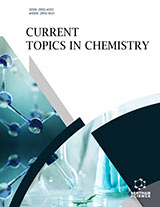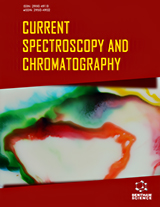Abstract
A sensitive and simple Gas Chromatographic-Mass Spectrometric method was developed and validated for the determination of captopril in human plasma. Thiosalicylic acid was used as an internal standard, and plasma extraction was performed by solid phase extraction. The limit of quantification was 0.5 ng/mL with signal to noise ratio greater than 5. The calibration curve was linear from 1 to 160 ng/mL with r2 greater than 0.99. The coefficient of variation for within and between assay imprecision of the standards and for the limit of quantification were ≤ 10 % and ≤ 7 %, respectively. The percentage of inaccuracy for within- and between-assay including lower and upper limits of quantitation were ≤ 8 % and ≤ 6 %, respectively. The absolute recovery of captopril and thiosalicylic acid in plasma were greater than 98 % and 99 %, respectively. The high sensitivity and accuracy of this method allowed us to measure low concentrations of captopril in plasma for bioequivalence studies in healthy subjects.
Keywords: Captopril, Gas chromatography-mass spectrometry, Solid phase extraction (SPE).
Current Analytical Chemistry
Title:Analysis of Captopril in Human Plasma Using Gas Chromatography-Mass Spectrometry (GCMS) with Solid-Phase Extraction (SPE)
Volume: 6 Issue: 4
Author(s): Z. Chik, A. M. Mustafa, Z. Mohamed and T. C. Lee
Affiliation:
Keywords: Captopril, Gas chromatography-mass spectrometry, Solid phase extraction (SPE).
Abstract: A sensitive and simple Gas Chromatographic-Mass Spectrometric method was developed and validated for the determination of captopril in human plasma. Thiosalicylic acid was used as an internal standard, and plasma extraction was performed by solid phase extraction. The limit of quantification was 0.5 ng/mL with signal to noise ratio greater than 5. The calibration curve was linear from 1 to 160 ng/mL with r2 greater than 0.99. The coefficient of variation for within and between assay imprecision of the standards and for the limit of quantification were ≤ 10 % and ≤ 7 %, respectively. The percentage of inaccuracy for within- and between-assay including lower and upper limits of quantitation were ≤ 8 % and ≤ 6 %, respectively. The absolute recovery of captopril and thiosalicylic acid in plasma were greater than 98 % and 99 %, respectively. The high sensitivity and accuracy of this method allowed us to measure low concentrations of captopril in plasma for bioequivalence studies in healthy subjects.
Export Options
About this article
Cite this article as:
Chik Z., M. Mustafa A., Mohamed Z. and C. Lee T., Analysis of Captopril in Human Plasma Using Gas Chromatography-Mass Spectrometry (GCMS) with Solid-Phase Extraction (SPE), Current Analytical Chemistry 2010; 6 (4) . https://dx.doi.org/10.2174/1573411011006040329
| DOI https://dx.doi.org/10.2174/1573411011006040329 |
Print ISSN 1573-4110 |
| Publisher Name Bentham Science Publisher |
Online ISSN 1875-6727 |
 6
6
- Author Guidelines
- Bentham Author Support Services (BASS)
- Graphical Abstracts
- Fabricating and Stating False Information
- Research Misconduct
- Post Publication Discussions and Corrections
- Publishing Ethics and Rectitude
- Increase Visibility of Your Article
- Archiving Policies
- Peer Review Workflow
- Order Your Article Before Print
- Promote Your Article
- Manuscript Transfer Facility
- Editorial Policies
- Allegations from Whistleblowers
- Announcements
Related Articles
-
Roles of Hematopoietic Stem and Progenitor Cells in Ischemic Cardiovascular Disease
Current Stem Cell Research & Therapy Vascular Endothelial Growth Factor Receptor Tyrosine Kinase Inhibitors in Non-Small Cell Lung Cancer: A Review of Recent Clinical Trials
Reviews on Recent Clinical Trials Pharmacologic Therapy for Cardiovascular Risk Reduction in Patients with the Metabolic Syndrome
Current Pharmaceutical Design Nitric Oxide as a Marker for Levo-Thyroxine Therapy in Subclinical Hypothyroid Patients
Current Vascular Pharmacology Pharmacological Inhibition of MMP3 as a Potential Therapeutic Option for COVID-19 Associated Acute Respiratory Distress Syndrome
Infectious Disorders - Drug Targets The Cardiorenal Syndrome: Pathophysiologic Crosstalk, Outcomes, and Treatment Targets
Cardiovascular & Hematological Disorders-Drug Targets Treatment of Chronic Peripheral Arterial Disease
Current Vascular Pharmacology Meet Our Editor
Central Nervous System Agents in Medicinal Chemistry Persistent Current Blockers of Voltage-Gated Sodium Channels: A Clinical Opportunity for Controlling Metastatic Disease
Recent Patents on Anti-Cancer Drug Discovery Advances in Methods for Therapeutic Peptide Discovery, Design and Development
Current Pharmaceutical Biotechnology Interrelationships with Metabolic Syndrome, Obesity and Cardiovascular Risk
Current Vascular Pharmacology Mineralocorticoid Receptor Antagonism and Cardiac Remodeling in Ischemic Heart Failure
Current Medicinal Chemistry - Cardiovascular & Hematological Agents Toll-Like Receptors and Myocardial Ischemia/Reperfusion, Inflammation, and Injury
Current Cardiology Reviews Statins and Protein Prenylation in Cancer Cell Biology and Therapy
Anti-Cancer Agents in Medicinal Chemistry Immunoregulatory and Effector Activities of Nitric Oxide and Reactive Nitrogen Species in Cancer
Current Medicinal Chemistry Mitochondrial-Targeted Plastoquinone Derivatives. Effect on Senescence and Acute Age-Related Pathologies
Current Drug Targets The Relationship Between Cleft Lip, Maxillary Hypoplasia, Hypoxia and Phenytoin
Current Pharmaceutical Design Nitric Oxide and the Regulation of Apoptosis in Tumour Cells
Current Pharmaceutical Design Methoxy Polyethylene Glycol-Epoetin Beta as a Novel Erythropoiesis Stimulating Agent with Possible Nephroprotective and Cardiovascular Protective Effects in Non-Dialysis Chronic Kidney Disease Patients
Current Pharmaceutical Biotechnology Potential Roles of HDAC Inhibitors in Mitigating Ischemia-induced Brain Damage and Facilitating Endogenous Regeneration and Recovery
Current Pharmaceutical Design


























